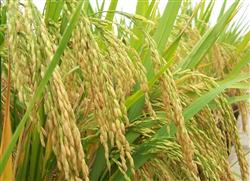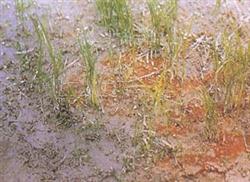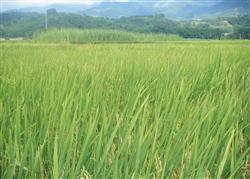High-yielding cultivation techniques of single-season Direct seeding Rice

Direct seeding single night has the advantages of easing seasonal contradictions, reducing labor intensity, labor-saving, cost-saving, seed-saving and seedling-saving, and its yield is generally above 500kg, which is welcomed by the majority of farmers. According to the planting experience in the past few years, it is summarized as follows: first, select and breed excellent varieties, do a good job in the leveling of the field, improve the sowing quality, and strive for the whole seedling. High-yield varieties with short stem, fertilizer resistance and strong rooting ability should be selected. according to many years of experiment and large-scale demonstration, high-quality and high-yield varieties such as Xiushui 11, Bing98-110 and Bing97-59 were generally selected for single-night direct seeding. It is very important to ensure the whole seedling, uniform seedling, field preparation quality and sowing quality of direct seeding rice. To achieve the "four essentials" in the quality of field preparation: first, ploughing early, ploughing in time with base fertilizer after previous harvest, ploughing should not be too deep, generally using rotary tillage is better; second, it is better to apply sufficient basal surface fertilizer, generally applying 15 piculs of organic fertilizer per mu or returning straw 200-250kg before sowing, urea 12-13kg, calcium superphosphate 20kg, potassium chloride 7.5kg as base fertilizer. Third, the surface of the field should be flat, and efforts must be made on the word "flat" when preparing the soil, so that the difference between the height of the whole field does not exceed one inch; fourth, ditches should be matched, horizontal ditches, vertical ditches, and enclosed ditches should be opened well, and the border should be strictly prevented from stagnant water on the surface of the field, and the border can also be widened appropriately, so as not to affect sowing and field management. We should adhere to the "six essentials" in sowing quality: first, we should persist in drying and selecting seeds before sowing, select seeds with full grains and free of disease and insect, soak them with 80% "402" or 10% soaking seed Ling 2 ml in water for 48-60 hours, and accelerate germination after cleaning. Second, it is necessary to persist in accelerating germination and sowing, seed germination should be moderate, germination is too short, increase the time of field germination and seedling formation, it is easy to be affected by adverse climatic conditions, germination is too long, and it is easy to cause damage and shedding of young buds and young roots when sowing. Generally, it is appropriate to accelerate germination to dew white or grow half-grain grain; third, to adhere to the rational use of seeds, we must first do a good germination test, requiring that the sowing amount per mu should be about 3.5kg under the condition of more than 90% germination rate, and in case of adverse climatic conditions or low seed germination rate, we should appropriately increase the sowing rate to ensure the basic seedling number of 85000-100000. Fourth, it is necessary to sow seeds every other day. In order to prevent the field from being too soft, the soil is too rotten and the sowing is too deep, it is appropriate to sow seeds the next day after ploughing and making beds. Combined with the actual and perennial climatic conditions in our area, it is generally appropriate for direct seeding in late May. No later than June 20, in order to avoid flooding seedlings and causing rotten seedlings due to excessive Rain Water in the future; fifth, we should persist in uniform sowing and take scales to the fields. Quantitative sowing in separate borders, sowing methods generally adopt direct seeding and strip sowing. If mechanical sowing is used, strip sowing or on-demand sowing can be used. After sowing, the valley collapses again and is not required to be exposed. Grain should adhere to continuous planting to prevent the harm of rats, and sow some prepared seedlings at the head of the field, so that the seedlings can be replenished in time when there is a shortage of seedlings to ensure the whole seedling. Second, do a good job of field management, raise strong seedlings to promote early development, and ensure yield and income increase. 1. Early management (from sowing to three-leaf stage), the main cultivation objectives: uniform seedlings, uniform seedlings, strong seedlings. Early application of seedling fertilizer to ㈠. When the seedlings grow to two leaves, the seedlings should be fertilized in time, and urea 5-7kg should be applied per mu to promote the early tillering and growing tillering of rice seedlings. The seedlings of ㈡ were moist. After sowing ditch irrigation moist seedling, wet irrigation after green, sunny day to prevent field dry crack, rainy day to exclude ditch water, this period is mainly to irrigate horse water. ㈢ chemical weeding. The safe pre-bud herbicides of rice, such as Daozhujing, Longshu, etc., were selected to control the germination of barnyardgrass, sedge and other annual weeds effectively (see the operating rules for safe use of main diseases and insect pests of single-cropping rice in Yuhang District). ㈣ checked seedlings and replenished seedlings in time. When there is a lack of seedlings in the direct seeding rice field, the seedlings should be replenished in time. The methods are as follows: one is to make up for thinning, and the other is to fill the gap with prepared seedlings to ensure the whole seedling. 2. Mid-term management (from three-leaf stage to heading). Main cultivation objectives: promoting early onset, striving for sufficient spikes, strong individuals and stable populations. ㈠ is suitable for fertilizer application, which requires topdressing tillering fertilizer 10kg in the four-leaf stage, and then applying urea around 5kg as panicle fertilizer according to seedling conditions and weather conditions. ㈡ tillers in shallow water and leaves lightly for many times. The shallow water layer should be established after the three-leaf stage to promote tillering. When the predetermined number of seedlings reaches 22-250000 in the peak tillering stage, the field should be drained and shelved in time because of the shallow root distribution of direct seeding rice, so it should be shelved many times in order to deepen the root system, reduce the highest seedling peak, coordinate the contradiction between individual and population, and achieve the goal of strong individual and stable population. Heavy resting will break the root system, affect the filling and fruiting in the later stage, and easily cause lodging. Weeding in the middle stage of ㈢, such as barnyardgrass and broad-leaved grass, should be evenly sprayed with 50% dichloroquinolinic acid 20-30g plus 10% benzylauron 20-24g with water 3 knapsack (to avoid the use of medicine in the hot sun). ㈣ made good use of flower-promoting and flower-protecting fertilizer: in the early stage of young panicle differentiation, urea was generally applied to 10-12kg/ mu to promote spikelet differentiation. Flower protection fertilizer applied urea 7-8kg/ mu at the tip of flag leaves to reduce floret declination. ㈤ disease and pest control. Direct seeding rice has tender seedlings and large population, and is vulnerable to diseases and insect pests. In the early stage, it is mainly to control rice thrips, and in the middle and later stages, we should pay attention to the control of rice leaf roller, Chilo suppressalis, planthopper, sheath blight and false smut (see operating rules for details). 3. Late stage management (from heading to harvest). The main cultivation objectives, green stalk yellow ripe, beautiful appearance, no lodging, no premature senility. ㈠ intermittent irrigation, dry-wet alternating potential, mainly wet, after the water can not see the front water, do not cut off the water too early, in order to maintain and prolong the root activity, to maintain and prolong the root system, to achieve the purpose of root maintenance, leaf protection, grain weight and lodging prevention. ㈡ is suitable for grain fertilizer. According to the growth trend of direct seeding rice, combined with disease control and pest control, 3kg urea is generally applied per mu. ㈢ harvested in good time. Harvest in time when the maturity reaches more than 90% to prevent cutting. In addition, in the field management, such as fertilization, spraying and other operations, should walk in the ditch, try to avoid walking on the border, in order to prevent and reduce lodging in the later stage.
- Prev

Prevention and Control of Rice Diseases, pests and Weeds in Green Agricultural products
Rotten rice seedlings are the seeds and seedlings of rice that die in the seedling field (rotten seeds, rotten buds and dead seedlings), which can be divided into two categories: physiology and infectivity. Physiological rotten seedlings are purely caused by adverse environmental conditions, while infectious rotten seedlings refer to weak parasites such as Pythium, Fusarium, Fusarium and Rhizoctonia caused by adverse environment.
- Next

Measures for Promoting Early Maturity of Rice
1, early seedling training, breeding strong seedlings seedlings after the needle began small ventilation, 1 leaf 1 heart gradually increase ventilation, so that the temperature control at 20-25℃;2-3 leaf stage gradually into the day cover, at this time if the seedlings early and late leaf tip water droplets less, bed soil dry to irrigate a permeable water, and combined with seedbed topdressing, urea 1.5 per square meter of seedbed.
Related
- The first cup of black tea in spring, the flavor and history of tea gardens in Kenya, Africa
- The computer can not only choose potatoes, but also grow tea rice. AI will grow winter oolong tea champion.
- It is not only the inflated tea bitten by insects, but also engraved with the four seasons tea in Beipu.
- The Oriental Beauty Tea Festival in Zhuxian County takes the stage at the weekend to experience the plus-size feast of oil tea.
- & quot; Oriental Beauty Tea & Exploration of Emei in Hsinchu, the hometown of quot;
- The new variety of strawberry "Tainong 1" dessert is the first choice with mellow aroma. Crimson gorgeous
- History of Tea in Taiwan: from Wild Inner Mountain to Export Tea Garden
- Two types of Taiwan Oriental Beauty Black Tea won the British three-Star Award for Childhood Tea Xiang Zhang Jiaqi changed from pilot to champion tea maker.
- Banana species and varieties: the planting history of Taiwan Xianren banana and dwarf banana is long, is banana disease resistant?
- Coffee planting Technology: Qianjie Coffee from Seedling to harvesting

